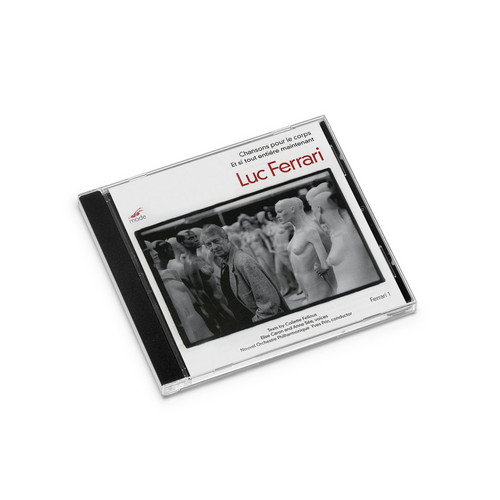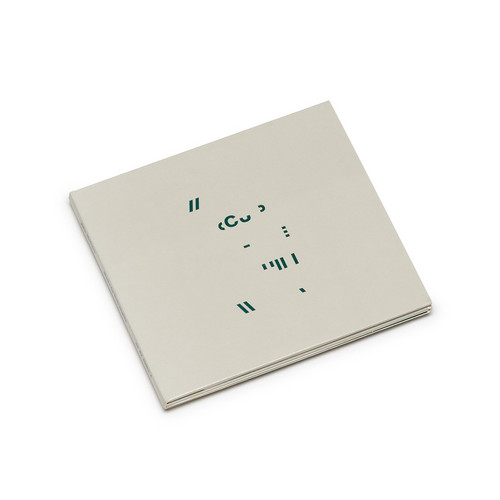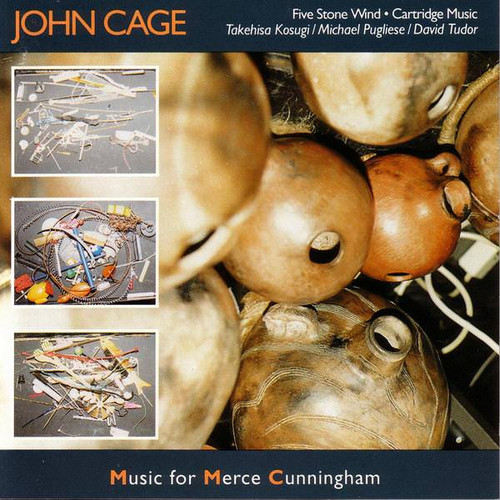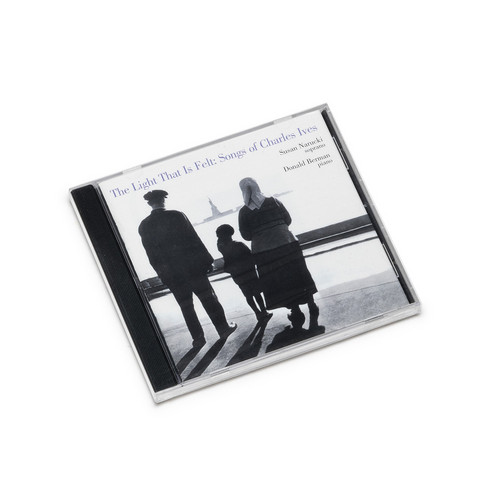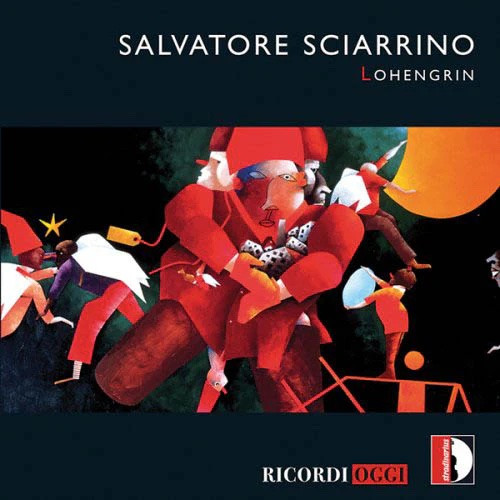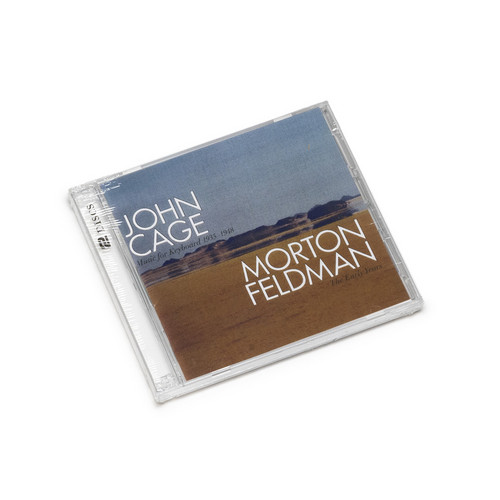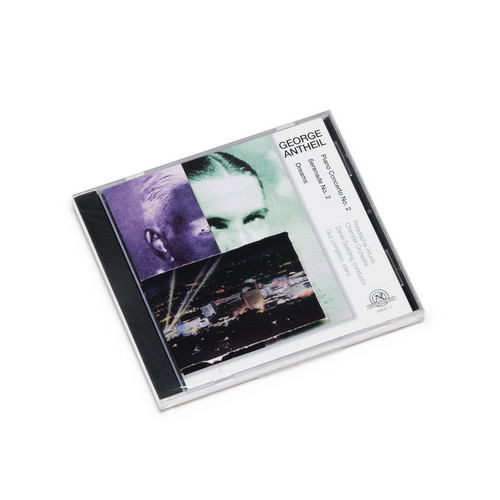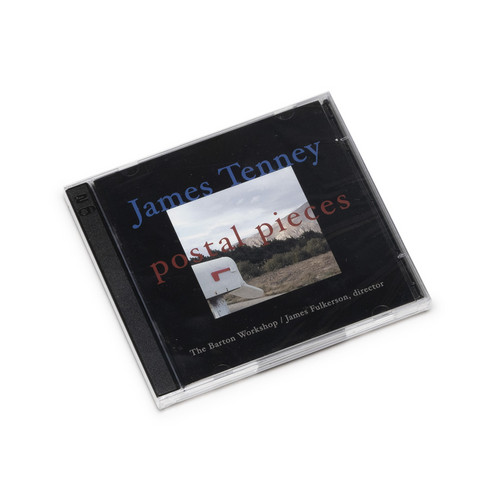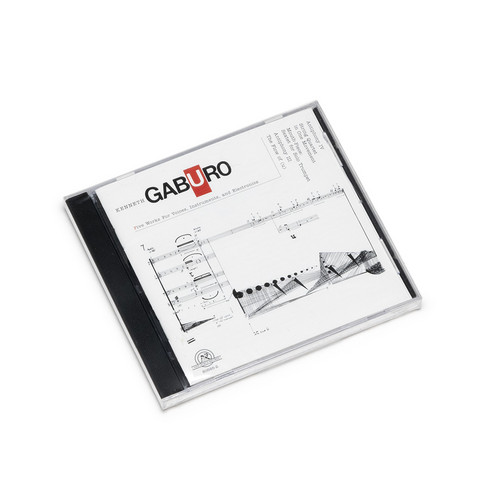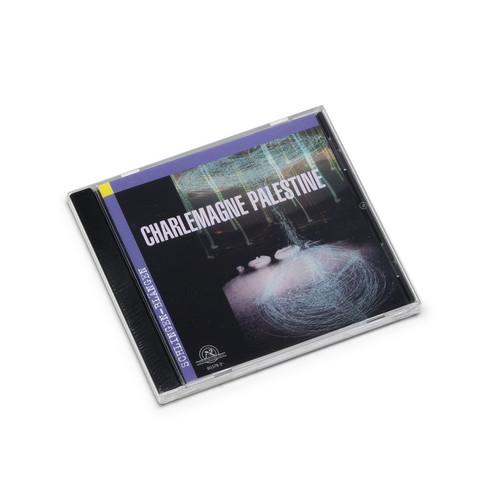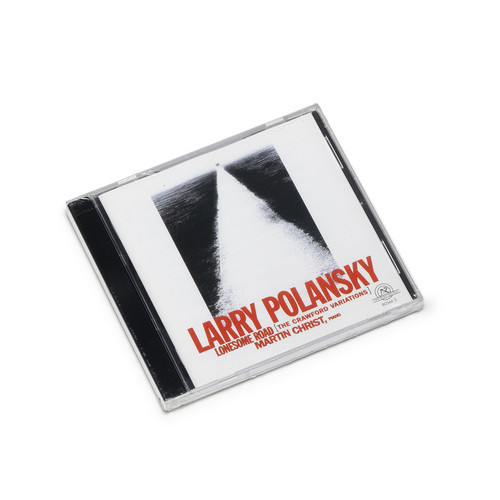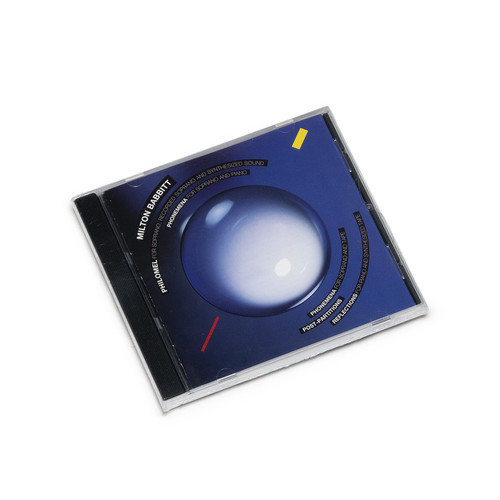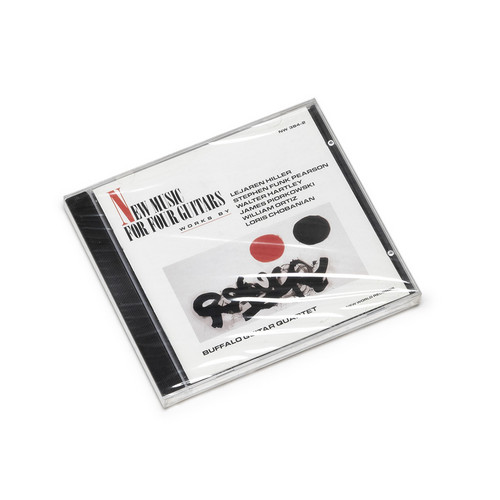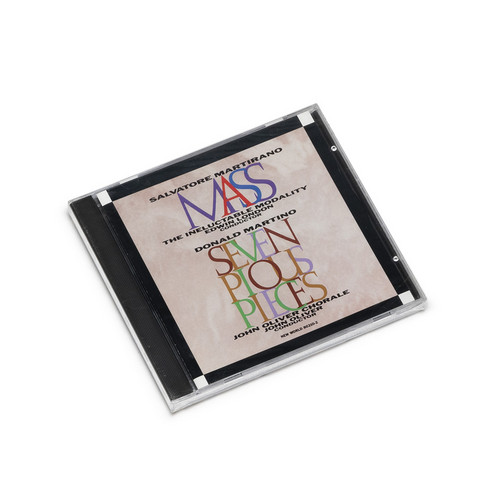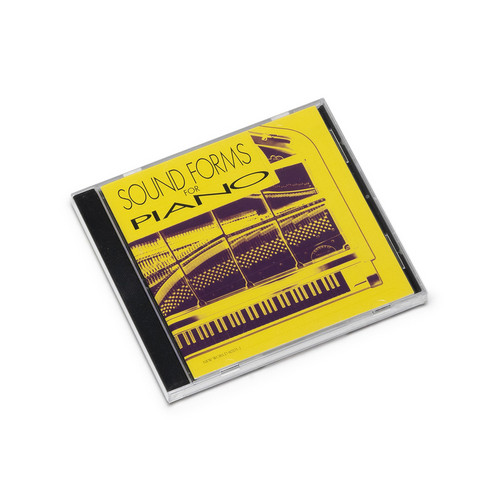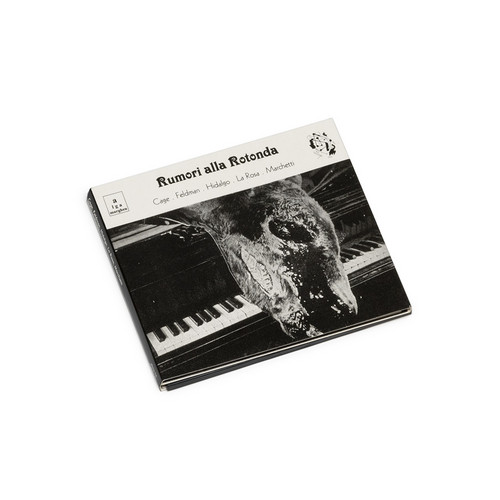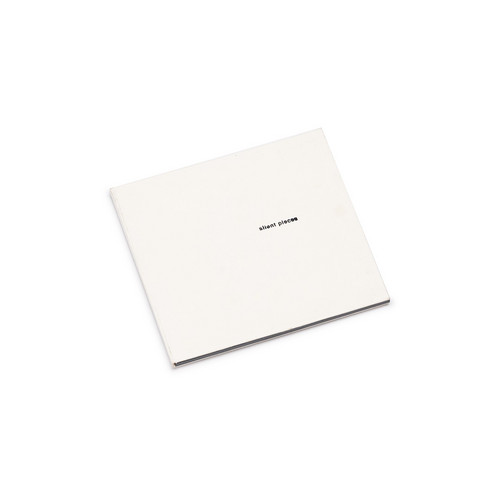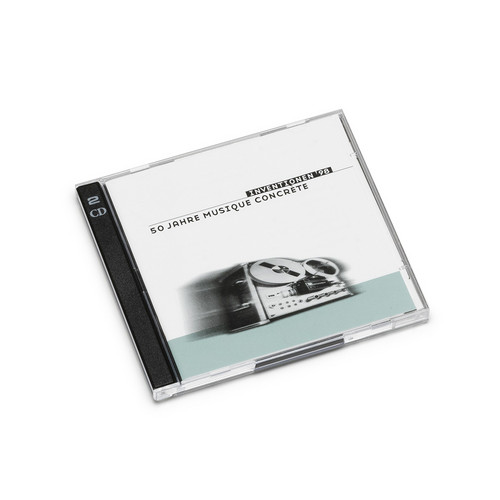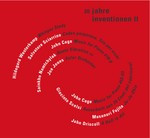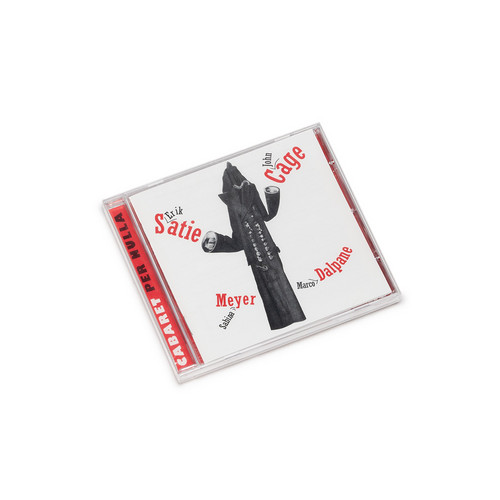Volume 1: Chansons Pour Le Corps
With recent releases on John Zorn's Tzadik label among others, Luc Ferrari is enjoying a well deserved renaissance. After studies with Messiaen and formative visits to Darmstadt in the '50s, Ferrari (born Paris, 1929), with Pierre Schaeffer, was one of the co-founders of the Groupe de Recherches Musicales in 1959. In the sixties he worked with the Ensemble Instrumental de Musique Contemporaine de Paris and made the first French television documentaries on new music, between 1964-69, he ta…
Works for Instruments
Edition RZ presents John McGuire's Works For Instruments. Performers: Ensemble Modern -- Julia Rempe (soprano); Pellegrini-Quartett: Antonio Pellegrini, Thomas Hofer (violin); Fabio Marano (viola); Helmut Menzler (violoncello); musikFabrik: Hermann Kretzschmar, Paulo Alvarez, Irmela Roelcke, Eun-Ju Kim, Ulrich Löffler, Jürgen Kruse (piano), Christine Chapman, Jodie Lawson, Charles Putnam, Rohan Richards (horns), Dirk Rothbrust, Carlos Tarcha (percussion). Each of the compositions of post-minimal…
Music for Merce Cunningham
2008 repress, featuring a 24-bit Hi-Definition remaster; originally released in 1991. Volume 4 in the Music of Cage series. The first audio document between John Cage & Merce Cunningham. It includes a 55-minute piece called "Five Stone Wind" performed by David Tudor (live electronics), Takehisa Kosugi (amplified violin, live electronics, bamboo flute) and Michael Pugliese (clay pots and tapes) as well as a 19-minute version of the classic "Cartridge Music" (same 3 performers, "using phonograph c…
The Light That Is Felt - Songs of Charles Ives
Charles Ives composed nearly 200 songs throughout his life. Wiley Hitchcock, in the thorough introduction to his 2004 critical edition 129 Songs, described the Ives song canon as the contents of a kind of scrapbook or commonplace book or chapbook, or even a desk drawer. Into such a receptacle Ives tossed irregularly, if not casually, his reactions Ñin the form of songsÑto memories, personalities, places, events, discoveries, ideas, visions, and fantasies in his life.' Whether popular tale or per…
Lohengrin
2008 release ** Lohengrin, Salvatore Sciarrino's "azione invisibile", is both a gloss on Wagner's opera and a sly debunking of it. It was conceived by its composer as an opera with action invisible, for one singer/actress who assumes all the charactersn Sciarrino's monodrama, based on one of Jules Laforgue's Moralités Légendaires, episodes from the story are viewed through the distinctly jaundiced eyes and ears of Elsa, the woman Lohengrin marries and then deserts. A single voice narrates and ta…
Music For Keyboard 1935-1948 / The Early Years
This double-CD set combines two of the key titles of Columbia Records's
legendary "Music of Our Time" series curated by David Behrman. Jeanne
Kirstein's recording of Cage's early keyboard works remains a touchstone
of Cagean interpretation notwithstanding the passage of time. Christian
Wolff recalls, "I remember Cage saying that Jeanne Kirstein's playing
caught the spirit in which the pieces were written at the time he wrote
them-a kind of simple excitement and enthusiasm (also, surely, ou…
George Antheil: Piano Concerto No. 2
The Piano Concerto No. 2 is an experiment in classical form. The work contains the same sudden juxtapositions and abrupt contrasts of mood as his futurist music. But the excesses of his recent Ballet mécanique are compensated for by an almost spare, baroque orchestration and motifs that draw on Bach as much as on Stravinsky. In three movements, George Antheil employs a more restrained but still exuberant style. The beautifully meditative slow movement is followed by a virtuosic and compelling to…
Postal Pieces
James Tenney is one of the most important American composers and theorists of the past fifty years. For a very long time, his work was known mainly to other musicians and its tremendous influence was belied by its obscurity. In the past twenty years, however, as his music and writings have been more and more published, recorded, performed, and studied, his place in the context of American contemporary music has become far better understood. He has pioneered musical fields as diverse as computer …
Five Works For Voices, Instruments, And Electronics
Kenneth Gaburo (1926–1993) composed works for instruments, voices, electronics, multi-media, theater, and a variety of other resources. Foremost among his many interests was a concern with the voice and with language—how we shape language and how we are shaped by it—and with making works that existed somewhere between the boundaries of music and language. Of the works on this CD, three are intensely concerned with what Gaburo termed “Compositional Linguistics” (Antiphony III, Antiphony IV, and M…
Schlingen Blängen
Schlingen Blängen is an invaluable addition to the slender but precious discography of Charlemagne Palestine, one of the legendary figures of the amazingly fertile New York and West Coast experimental music/art scene of the sixties and seventies. He is considered to be a seminal figure of early minimalism-as important as his better-documented contemporaries. His performances on the giant bells at St. Thomas Church and his evening-length Bösendorfer shows are still spoken of with awe by those who…
Lonesome Road (The Crawford Variations)
Larry Polansky, though known primarily for his work in the field of computer music, has produced a major addition to the keyboard literature, this massive theme-and-variations on Ruth Crawford Seeger’s arrangement of the folk song "Lonesome Road." Inspired by his deep engagement with her music, Lonesome Road (1988-89) is a prime example of Polansky’s penchant for building large architectonic structures through complex transformational processes. The work is in three sections of seventeen variati…
Philomel
Compositions performed by Bethany Beardslee and Lynne Weber (sopranos), Jerry Kudern and Robert Miller (pianos). The four works on this recording span a period of a decade and are among the best of Milton Babbitt’s output, tape and otherwise. Philomel, for soprano, recorded soprano, and synthesized sound, is one of the undisputed classics of electroacoustic music and this is its definitive recording. Two versions of Phonemena —one for soprano and piano, the other for soprano and tape— another vi…
New Music for Four Guitars
The guitar is the popular instrument par excellence. As apt for Brazilian sambas for Irish ballads or American blues, the guitar has also recently been adapted as a surrogate for plucked instruments from non-Western musical traditions; no idiom seems beyond its reach. When social history of the second half of the twentieth century is written, it may be seen that the guitar is as central to this era as the piano was to the nineteenth century. But while the piano was an emblem of upward social asp…
Mass/Seven Pious Pieces
This collection of two tonal works by composers known for their non-tonal compositional style is a fine example of contemporary approaches to sacred choral music. Salvatore Martirano’s Mass is a setting of a traditional Latin Mass whilst Donald Martino’s Seven Pious Pieces sets religious texts by Robert Herrick. The vocal writing is masterful with transparent textures and flowing contrapuntal lines.
Sound Forms for Piano: Cage/ Cowell/ Johnston/ Nancarrow
“... in the past, the point of disagreement has been between dissonance and consonance, it will be, in the immediate future, between noise and so-called musical sounds.” — John Cage The most characteristic features of American music are its eclecticism and innovation. The works presented here are perfect examples; their only common feature is that they were written for a piano altered in some way.
The disc opens with the eerie, wailing cries of Henry Cowell’s (1897-1965) The Banshee. In order …
Rumori alla Rotonda
Live recording at the Rotonda del Pellegrini, Milan, January 21st, 1959 featuring John Cage, Morton Feldman, Juan Hidalgo, Leopoldo La Rosa, and Walter Marchetti. Among all the events involving John Cage during the long stay in Europe that followed his controversial appearance at Darmstadt Ferienkurse in September 1958, the concert he held in Milan on January 21st perhaps represents a less well known episode.
Featuring Cage's intervention both as composer and performer of one's own work as well …
Silent Pieces - Live At Dacapo II
1995 release ** Special members-only edition for the sponsors' circle of dacapo. Music by: Anton Webern, Morton Feldman, John Cage, Hans Otte, Malcolm Goldstein, Dietrich Eichmann, Yoshikazu Iwamoto.
Inventionen 98
A documentary of pieces performed at the Inventionen Festival in Berlin, 1998. Features: Unsuk Chin, Patrick Kosk, Werner Cee, Francois Donato, Robin Minard, Wolfgang Mitterer, Francis Dhomont, Erik Mikael Karlsson, Trevor Wishart. "Not as much as a bringer-up to speed (or yet another history lesson at that) as a fine cache of current keepers of the crop. New ('93-98), complete pieces from Trevor Wishart (northern-UK composer/programmer known and loved these days for his mid-70's works such as M…
20 JAHRE INVENTIONEN II
Volume 2 of the CD documentation of the Berlin festival "Inventionen" (volume 1 containing Horatiu Radulescu's string quartet no. 4)a various artists retrospective sampler including recordings of works by the following composers: Hildegard Westerkamp, Salvatore Sciarrino, John Cage, Sainkho Namtchylak, Joe Jones, Giacinto Scelsi, Masanori Fujita, John Driscoll.Hildegard Westerkamp: Whisper Study (1975-79, Tape work, Inventionen 1986)Salvatore Sciarrino: Codex purpureus, Trio per archi (1968-1983…
Cabaret per Nulla
This album comes from the love for Music. Contemporary music, but also Songs. From the love for History and People. From the observation of a stage before and after a concert. And from Friendship and Collaboration.Erik Satie and John Cage were two musicians of great influence and supreme coherence. In their rigorous path they choose the road to astonishment. On the road to their artistic ideal they met the “music”, when others only loosely saw it. Satie and Cage are, now historically, two compos…
